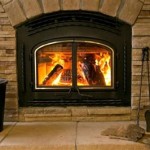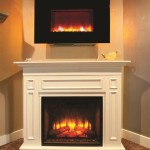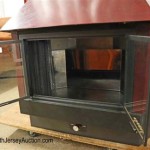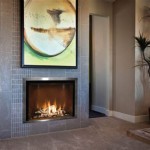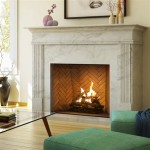Concrete Base Essential for Outdoor Fireplace Installation
Outdoor fireplaces offer an attractive focal point for patios, decks, and other outdoor living spaces. They provide warmth, ambiance, and a gathering spot for socializing. However, the installation of an outdoor fireplace requires careful planning and execution, with a solid concrete base serving as a crucial element for its stability and longevity. A properly constructed concrete base ensures the fireplace remains level, prevents shifting due to ground movement, and mitigates fire hazards.
The necessity of a concrete base stems from the substantial weight of most outdoor fireplaces. Whether constructed from brick, stone, or concrete blocks, these structures can weigh hundreds or even thousands of pounds. Without a stable, load-bearing foundation, the fireplace is susceptible to settling, cracking, and potential collapse. Furthermore, direct contact with the ground exposes the fireplace to moisture, freeze-thaw cycles, and potential damage from vegetation growth. Building a concrete base addresses these issues, providing a stable and durable platform for the fireplace.
The construction of a concrete base involves several stages: planning and preparation, formwork construction, concrete pouring and finishing, and curing. Each stage requires careful attention to detail to ensure the base meets the required specifications and provides adequate support for the fireplace.
Ensuring Proper Load Distribution
One of the primary functions of a concrete base is to distribute the weight of the fireplace evenly across the underlying ground. This prevents localized settling that can lead to cracks and structural instability. The size and thickness of the concrete base should be calculated to accommodate the weight of the specific fireplace model being installed. Manufacturers typically provide guidelines regarding the minimum base dimensions and load-bearing capacity required. It is advisable to consult with a structural engineer, especially for larger or heavier fireplace units, to ensure the base is adequately designed.
The soil beneath the concrete base plays a significant role in its ability to support the fireplace. Unstable or poorly compacted soil can lead to settling, even with a properly constructed concrete base. Before pouring the concrete, the soil should be compacted thoroughly using a plate compactor. In areas with known soil instability, such as expansive clay soils, additional measures may be necessary, such as the installation of geogrid or the use of a deeper foundation.
Reinforcement is another critical factor in ensuring proper load distribution. Steel rebar embedded within the concrete provides tensile strength, preventing the base from cracking under stress. The rebar should be arranged in a grid pattern and adequately tied together to create a cohesive reinforcing network. The diameter and spacing of the rebar should be determined based on the size and weight of the fireplace, as well as the soil conditions.
Preventing Moisture Damage and Fire Hazards
A concrete base acts as a barrier between the fireplace and the ground, preventing moisture from wicking up into the structure. Moisture can accelerate the deterioration of brick, stone, and mortar, leading to structural damage and reduced lifespan. By elevating the fireplace on a concrete base, the risk of moisture damage is significantly reduced.
The concrete base also serves as a fire barrier, preventing sparks or embers from igniting nearby vegetation or combustible materials. This is particularly important in areas with dry vegetation or where the fireplace is located close to wooden structures. The base should extend beyond the perimeter of the fireplace to provide ample protection from stray embers.
In addition to its fire-resistant properties, the concrete base can also be treated with sealants to further protect it from moisture and staining. A high-quality concrete sealant will penetrate the surface of the concrete, creating a water-repellent barrier that prevents the absorption of liquids. This helps to maintain the appearance of the base and prolong its lifespan.
Ensuring Proper Drainage and Longevity
Proper drainage around the concrete base is essential to prevent water from pooling and potentially damaging the foundation. Adequate drainage can be achieved by sloping the concrete base slightly away from the fireplace and incorporating a drainage system, such as a French drain, to divert water away from the area. This is particularly important in areas with heavy rainfall or poor soil drainage.
The longevity of the concrete base depends on the quality of the materials used and the care taken during construction. High-quality concrete mix, proper reinforcement, and thorough compaction are all essential for creating a durable and long-lasting foundation. In addition, regular maintenance, such as cleaning and sealing, can help to prolong the lifespan of the concrete base.
Consider using air-entrained concrete, especially in regions prone to freezing temperatures. Air-entrained concrete contains microscopic air bubbles that provide space for water to expand upon freezing, preventing the concrete from cracking. The addition of air-entraining admixtures during the mixing process improves the freeze-thaw resistance of the concrete.
Furthermore, ensuring the concrete cures properly is crucial. Curing involves maintaining a moist environment for the concrete during the initial hardening period. This allows the concrete to hydrate fully, resulting in a stronger and more durable structure. This can be achieved by covering the concrete with plastic sheeting or spraying it with water regularly for several days.
Choosing the correct thickness of the concrete base is highly dependent on the expected load and the soil conditions. Overengineering is preferable to underengineering. A thicker base will more effectively distribute the weight and provide a more stable platform, ultimately extending the life of both the base and the fireplace it supports.

Diy Outdoor Fireplace And Concrete Pads Your Headquarters

Concrete Block Outdoor Fireplace

Homemade Modern Diy Concrete Fire Pit 22 Steps With S Instructables

Dig The Martello Outdoor Fireplace Concrete Base Into Your Lawn Flare

Build An Outdoor Fireplace The Shed

Build An Outdoor Fireplace The Shed

Outdoor Fireplace With Bench Seating W Tips From A Professional Mason

How We Built Our Outdoor Fireplace Chris Loves Julia

How To Build An Outdoor Stacked Stone Fireplace

Stonetutorials Living Stone Masonry
Related Posts

